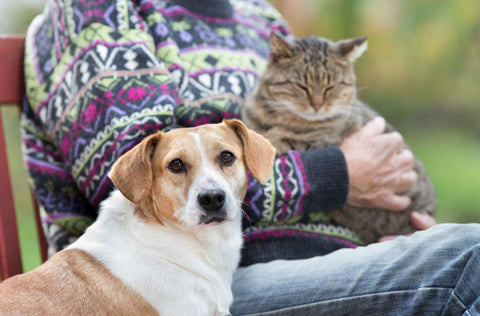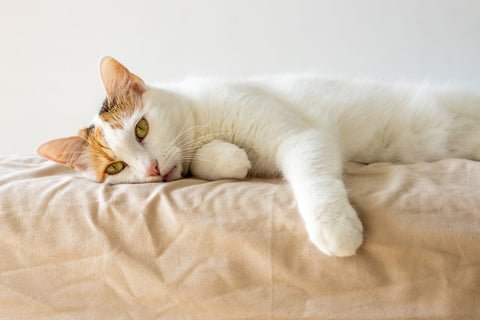

Pet Insurance for Elderly Dogs: A Beginner's Guide
Key Highlights
- Pet insurance for elderly dogs and cats helps cover the costs of unexpected veterinary bills, especially as they are more prone to health issues in their later years.
- While it can be more expensive, senior pet insurance provides financial peace of mind and ensures your furry companion receives the best possible care without compromising your budget.
- Several factors influence the cost of pet insurance for older pets, including breed, age, location, and the coverage options you choose.
- When choosing a plan, carefully review the policy's terms and conditions, including coverage limits, deductibles, and reimbursement rates.
- It's essential to compare quotes from multiple pet insurance companies to find the most comprehensive and affordable option for your needs.
Introduction
Pet insurance is very important for pet owners, especially those with older dogs and cats in their senior years. As our pets get older, the need for more veterinary care and help can lead to hefty vet bills. Pet insurance can ease the stress of surprise vet bills. This way, you can focus on giving the best care to your cherished pet. This beginner's guide will help you understand pet insurance for older pets during their senior years. It will help you make smart choices for their health and happiness.
Understanding Pet Insurance for Elderly Dogs and Cats
Pet insurance for older dogs and cats works like plans for younger animals, but there are some important differences. The main difference is that premiums are usually higher. This is because older pets are more likely to have age-related health issues.
Knowing these differences is important when picking a plan that suits your budget and your pet's needs. As your loyal friend grows older, having complete pet insurance can help a lot in giving them the care and support they need in their golden years.
The Basics of Pet Insurance for Senior Dogs and Cats
Pet health insurance acts like a safety net for surprise vet costs. It helps cover some of the vet bills you might face unexpectedly. When you get a pet insurance policy, you choose a plan that fits your needs and budget. You pay a monthly premium to the insurance company.
Insurance companies have different plans. Each plan has different coverage limits, annual deductibles, and reimbursement rates. It is important to look over these details carefully. This will help you decide which policy is best for your pet and for your money situation.
Having pet health insurance means you can handle unexpected vet bills with confidence. You can focus on giving your pet the care they need without money worries.
articlebanners1
Why Elderly Pets Need Special Consideration
Elderly pets, just like older people, face more health problems as they get older. Common issues for senior dogs and senior cats include arthritis, diabetes, and kidney disease. These conditions may need long-term treatment and special care.
Because of this, it is important to think carefully when picking a pet insurance plan. You should look for one that has complete coverage to meet the needs of aging pets.
Choosing a plan that covers everything, including chronic conditions, can help a lot with costs. It can also make sure your pet gets the best veterinary care during their golden years.
Evaluating Your Senior Pet's Insurance Needs
Assessing your older pet's insurance needs is very important to find the right coverage. You should think about their breed, any existing health conditions, and their general health.
Also, look into common health issues that come with age. Consider the potential costs of treatment and ongoing care. By knowing your pet's needs, you can choose a plan that offers good financial protection.
Common Health Issues in Elderly Dogs and Cats
Elderly dogs and cats face many health problems. Common issues are arthritis, diabetes, kidney disease, cancer, and heart disease. Treating these conditions can lead to high veterinary bills. This includes costs for tests, medicines, and ongoing care.
For example, hip dysplasia is a common problem in older dogs. It may need surgery and long rehab. Another frequent issue is dental disease, which might require dental work or tooth extractions. Additionally, cats can suffer from a range of digestive issues as they get older.
Knowing these health risks shows why it is important to have good pet insurance. It helps to manage these costs well.
How Age Affects Insurance Options and Costs
Age is important when it comes to pet insurance options and costs. Many insurance companies set an upper age limit for signing up. They may not provide coverage for pets older than a specific age.
For those that do cover senior pets, they usually charge higher pet insurance premiums. This is because older pets often have more age-related health issues. The monthly cost of pet insurance tends to go up as pets get older, especially after they hit a certain age.
It is important to know how insurance companies consider age when pricing policies. This knowledge helps you compare plans and make good choices for your older pet's insurance coverage.
articlebanners2
Getting Started with Pet Insurance for Senior Pets
Starting pet insurance for older pets needs careful planning and action. First, collect important documents like your pet’s medical records and vaccination history. Next, look into different plans from trusted pet insurance companies. This will help you find a plan that fits your pet's needs and your budget.
What You Will Need to Begin
As pet owners, you want to make getting pet insurance easy, especially for older dogs and cats. Before you apply, collect your pet’s medical records. This includes their vaccination history and any vet bills you have. These documents will help the insurance company understand your pet's health.
Having these records ready makes applying smoother. Sometimes, the insurance company may ask your vet for more information, so it's a good idea to tell your vet in advance.
When you are ready, you are doing an important thing to protect yourself from unexpected vet costs with pet insurance.
Finding the Right Insurance Provider
Finding the best pet insurance for your older pet needs some careful thought about different insurance companies. Take time to look up and compare plans from various companies. Focus on things like what they cover, how much they will pay back, and what other customers say.
Think about the yearly cost, the deductible, and the coverage limits to pick a pet insurance plan that fits your budget and your pet's needs. You can use online tools and review websites to help you learn about the best pet insurance companies out there.
If you spend time researching and comparing these providers, you can find a good insurance company. This will offer you great coverage and fantastic customer service, giving you peace of mind for you and your pet.
articlebanners3
Step-by-Step Guide to Choosing Health Insurance for Older Dogs and Cats
Navigating pet insurance can be overwhelming. But using a clear approach can make it easier. If you follow these steps, you can make smart choices for your pet's health and your finances.
Remember, choosing pet insurance is important for your pet's health. It also shows how much you care about your bond with them.
Step 1: Assess Your Pet’s Health and Needs
Before you compare pet insurance plans, you need to look at your pet’s needs and risks. This check will help you pick a plan that gives the right coverage.
Factors to think about:
- Age: Older pets often need more visits to the vet, which affects the plan you should choose.
- Breed: Some breeds have specific health issues. This can change the coverage options and the cost.
- Existing health conditions: Many plans do not cover pre-existing conditions.
- Lifestyle: Active pets may get hurt or have accidents more often.
After you check your pet’s health and risks, you can focus on plans that give the best coverage for you, including options for diagnostic testing and exam fees. Do you want a high annual limit for surprises? Or do you want a wellness plan for regular check-ups? Knowing what your pet needs will help you make the right choice.
Step 2: Research Potential Insurance Providers
After you understand your pet’s health and coverage needs, it’s time to look for pet insurers. Keep these factors in mind when assessing insurance companies:
- Coverage options: Different pet insurance companies offer many types of coverage.
- Reimbursement rates: This means the percentage of vet bills the insurance company will pay.
- Customer reviews: Check online reviews from other pet owners to learn about the insurer’s reputation for service and handling claims.
- Financial stability: It is important to pick a reliable and financially secure pet insurance company.
- Policy features: Take note of features like waiting periods, yearly deductibles, and coverage limits.
By doing good research, you can find pet insurance companies that fit your needs and offer the best coverage for your furry friend.
Step 3: Compare Plans and Coverage Options
After you pick a few good pet insurance companies, it's time to look at their plans and coverage options. Get quotes from each company. This will help you check the monthly premium, deductible, and reimbursement rates.
Think about these important factors:
- Plan types: Some companies have plans that cover accidents only, illnesses only, or complete coverage.
- Deductible options: A higher deductible may lower your monthly premium, but it will increase what you pay out of pocket if you make a claim.
- Reimbursement levels: This shows the percentage of costs the insurance company will pay after you've paid your deductible.
Check your budget and what your pet needs. Pick a plan that balances cost and good coverage. Keep in mind that the cheapest plan isn’t always the best. Make sure it protects your pet’s health well.
Step 4: Understand the Policy’s Terms and Conditions
Before you make your decision, it's important to fully understand the terms and conditions of the policy you choose. Pet insurance policies have particular exclusions and limits. It's good to review these carefully to sidestep surprises when you need to make a claim.
- Waiting Periods: Many policies have waiting periods. This is a specific time after enrollment when coverage does not start yet.
- Exclusions: Make sure to know what the policy does not cover, like pre-existing conditions or some treatments.
- Claim Process: Look closely at how to file a claim. This includes what documents you need and how long it takes to get reimbursed.
By taking the time to understand your policy’s terms and conditions, you can make smarter choices about your pet’s coverage. This will help you avoid possible misunderstandings.
articlebanners4
Maximizing Benefits from Your Pet’s Insurance Plan
To get the most from your pet insurance, take action to manage your plan well. Submit your claims quickly. Make sure to provide all the needed documents and keep good records of your vet costs.
Talk openly with your veterinarian about what is covered. This will help you make smart choices for your pet's treatment. By being involved with your pet's insurance plan, you can be ready when you need it the most.
Submitting Claims Successfully
Submitting pet insurance claims on time helps you get your money back quickly and lowers your costs. When you go to the vet, write down all treatments, procedures, and prescriptions in detail. Get a clear vet bill that shows the diagnosis, treatments provided, and their costs.
Keep copies of all receipts for vet bills, emergency care visits, prescription medication, and other covered expenses. Learn how to file claims with your pet insurance company, whether it’s online, using an app, or sending it by mail.
By following these easy steps, you can make the claim process smooth and effective, which helps you get the most from your pet insurance plan.
Annual Check-Ups and Preventative Care Coverage
Pet insurance does more than just cover sudden illnesses and emergencies; it can also include illness plans that help your pet stay healthy with preventive care, including coverage for various genetic conditions. Many insurance companies provide wellness plans that you can add to your basic policy. These plans can pay for common costs, such as yearly check-ups, vaccinations, and parasite control.
Getting annual check-ups is very important. They help find health issues early. This means you can get help in time and may avoid expensive treatments later. Preventive care, like vaccinations and parasite control, protects your pet from avoidable diseases. It also helps them stay healthier for a longer time.
By choosing a pet insurance plan with wellness coverage, you can get help with routine care costs. This way, you can support your furry friend’s health and keep them happy for many years.
Conclusion
As pets grow older, their health needs change. This means they need special care. Knowing about pet insurance for older dogs and cats is important to keep them healthy. First, look at their health issues and what insurance they need. This will help you pick the right coverage that gives the most benefits. Remember to research different providers, compare plans, and understand the policy terms. Regular check-ups and preventative care are key to keeping them healthy. Getting pet insurance also gives you financial security and peace of mind as you face the challenges of caring for aging pets. Make their health and happiness a priority by staying informed and proactive about pet insurance.
Frequently Asked Questions
Can elderly pets still get pet insurance?
Yes, some pet insurance providers do not set a maximum age limit. This means you can sign up your senior pet no matter how old they are. However, remember that the coverage and costs can differ based on the senior pet insurance plan and any health problems that already exist.
What is the cost of pet insurance for older pets?
Pet insurance premiums are usually higher for older pets compared to younger ones. This is mainly because older animals may need more veterinary care. The monthly cost can also change based on factors like the pet's breed, the coverage limits, and the deductibles.
articlebanners5



